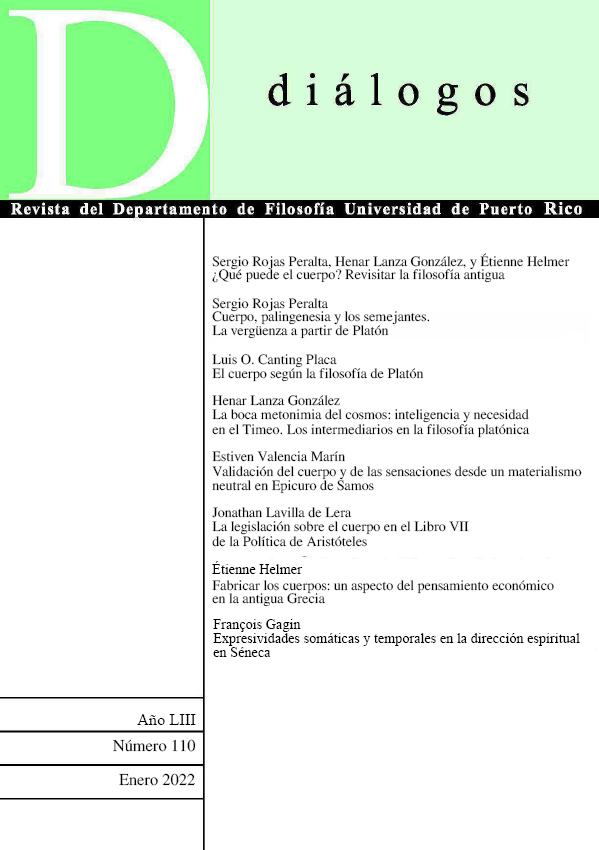Abstract
Self-knowledge and examination of conscience are relevant practices in spiritual direction. The teacher undertakes a kind of diagnosis of his disciple in favor of his moral improvement that would consist in alleviating or curing his passions. Thanks to an acute psychological attention (anchored in a vision of the world and of man) the indispositions and predispositions of the disciple are valued in that philosophical journey that is also an art of living well. The progress and relapses do not concern exclusively the psychic, but refer to the somatic: age, the strengths and weaknesses of the body, the opportune moment, the environment are so
many elements that are taken into account to ensure the health of the soul. The assessment of these considerations occurs in
the ascesis of dialogue from what could be called a master and disciple becoming. In spiritual direction, writing –mostly in the epistolary modality– is a support to enliven the philosophical logos (or the ratio ) and it is, at the same time, a test of existences between laudable transformations and physiological impediments. Taking Seneca as a core example, and being attentive to the crises and written progress, we propose to restore, in some way, the vigor, validity and limits of that discipline of life, where the body of the text is offered precisely as a philosophical expressiveness.

This work is licensed under a Creative Commons Attribution-NonCommercial 4.0 International License.

